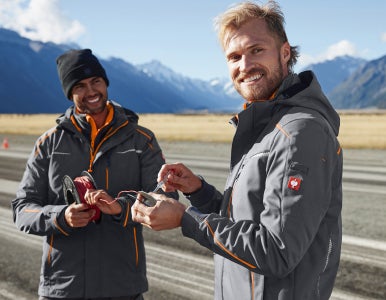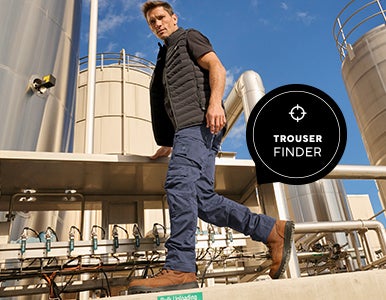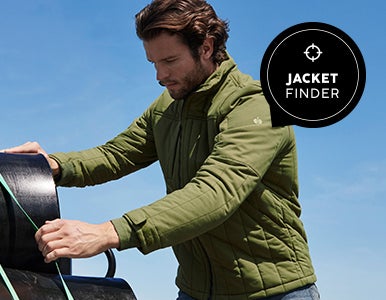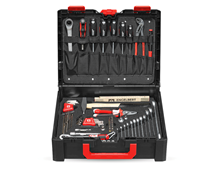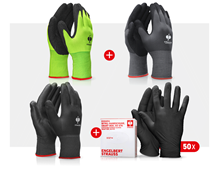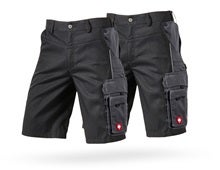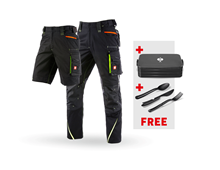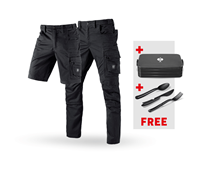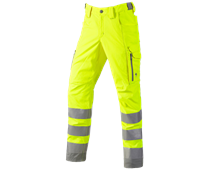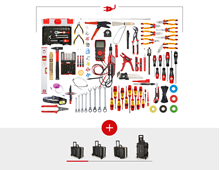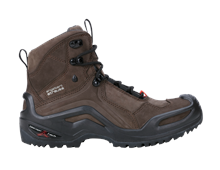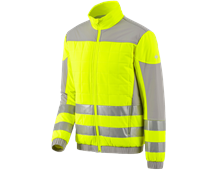MAK stands for Maximale Arbeitsplatz Konzentration (Maximum Workplace Concentration).
The time-weighted mean concentration that almost all workers are exposed to during an 8-hour day and a 40-hour week day after day without any risk of physical harm. This value is measured for fine particulate dust in mg/cubic metre, and in ml/cubic metre for gases and vapours.
Climate membranes are waterproof and also breathable. Their breathability only comes to the fore, if there is a temperature difference between inside and outside. If this is not the case, climate membranes lose their breathability and are basically water impermeable in both directions.
Thanks to its function, a differentiation is made between two types:
- Climate membrane:
Microporous membrane
Microporous means that the coating/membrane allows the water vapour molecules to pass through directly because the membrane pores are much larger than the water vapour molecules and much smaller than water drops. The most well-known example for a microporous membrane is GORE-TEX®. - Compact membrane:
In contrast to microporous coatings or membranes, compact coatings/membranes do not have any pores. Compact coatings/membranes achieve their breathability capacity through an electrochemical process. The water vapour is transported outside along the molecule chains with transport molecules through an electrochemical process. The most well-known example for a compact membrane is SympaTex®.
With respect to its breathability, compact membranes are usually inferior to microporous membranes. The only basic advantage of compact membranes is that they are easy to maintain because pores cannot become blocked due to dirt or incorrect care. However, the durability of coatings/membranes is highly dependent on the structure of the carrier material. The smoother the carrier material, the more durable the coating/membrane.
Lots of Strauss shoes have a special footbed. Memory foam helps the footbed in the shoes remember the footprint and adjusts to it over time. This means that pressure is taken off the foot where it is most needed. The benefits of memory foam in detail are:
- additional damping of the metatarsal head under the footbed
- pressure distribution / weight is taken off the central metatarsal head
- more comfort especially on hard floors
- dynamic support when walking, in combination with the footbed
- designed based on orthopaedic principles
Merino – naturally functional
Merino is a pure natural fibre. Merino wool comes from Merino sheep. The wool fibres of these alpine sheep are much finer and lighter than conventional wool. This excellent natural product is used to make materials that are extremely lightweight, soft and supple on the skin.
Climate-regulating, insulating and odour-inhibiting – these are natural properties of Merino wool. Merino wool stops the creation of bacteria and therefore stays odour-neutral. This unique fibre structure keeps the wearer warm in the cold and has a cooling effect in the heat; it reacts to various outer influences and discharges heat under heavy physical exertion. Ideal for changing conditions and stop-and-go activities. The surface of Merino fibres is hydrophobic; water in the shape of drops pearls off whilst the fibre core absorbs moisture in the shape of water vapour – without the material feeling moist or damp. Merino dries extremely quickly, is dirt-repellent and, in contrast to normal wool, it is an easy-care material that can be washed in the washing machine.
Mesh is a net-like fabric that makes clothing very breathable and lightweight. Depending on the product, the mesh fabric satisfies various additional functions.
Mixed fabrics are usually made of two fibre types (natural and/or synthetic). The goal when producing mixed materials is to merge primary materials to profit from a combination of their positive properties. Cotton/polyester mixes are often used in the workwear field. This preferred mix combines the benefits of natural and synthetic fibres into a strong, comfortable and easy-care material.
Cotton/polyester mixes absorb moisture well but also discharge it quickly as well. A higher percentage of cotton ensures higher tear-resistance, whilst the benefit of the polyester share is primarily its durability.
Modal fibres are 100% natural: The primary material used to make these fibres comes from cellulose (usually from beech wood). The natural cellulose is broken down in various state-of-the-art production procedures and spun into fibres.
- Excellent comfort thanks to super-soft Modal stretch material
- pleasantly elastic and fast-drying
- excellent moisture absorption
- easy-care and form-stable
Moleskin is a non-roughened atlas weft fabric made of cotton with a high warp density.

